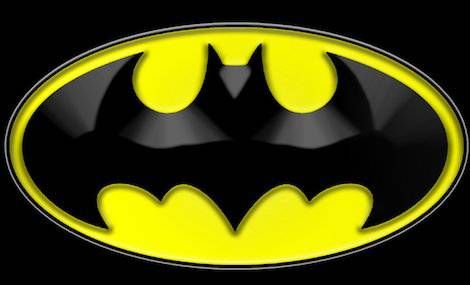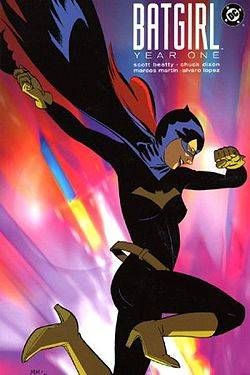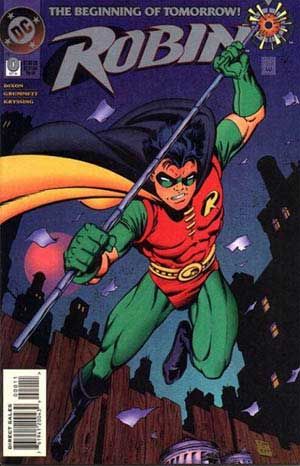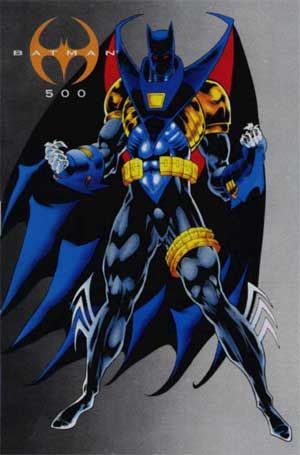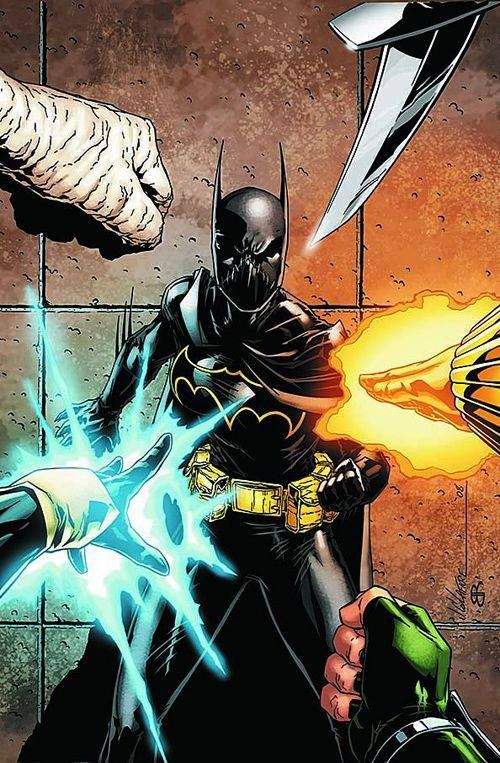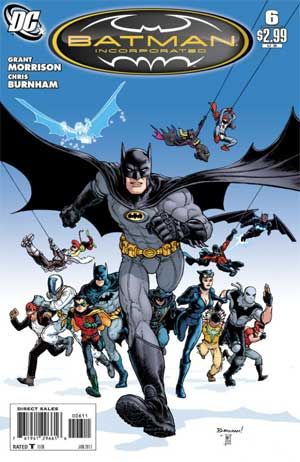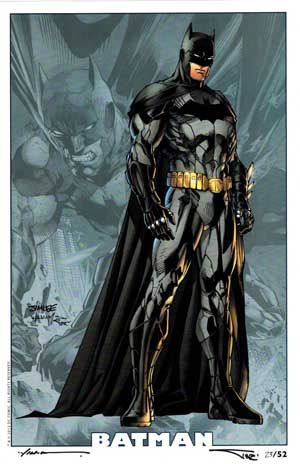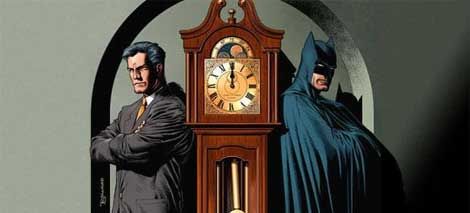
The Heart of the Bat, Part Two: Batman’s Modern Age
In my previous post on Batman, I discussed the need for Batman to have compassion. You need the heart to go with the cape and the brooding. Batman has to care about people, including his loves ones, to go on and fight crime. He has to have a reason to beat up criminals at night.
We’re now going to talk about what came after the Bronze Age, when the Crisis on Infinite Earths storyline erased several Batman timelines. One included Bruce settling down and having a family, with a few moments of happiness. You could say that erasing that timeline foreshadowed what would come.
Missing the Heart
Notable stories after Dark Knight Returns would miss the compassion part entirely. They would focus on being all angsty and broody. Side characters would exist to die. Gotham went from one of the brightest cities on the comics page to one of the grittiest.
Some exceptions exist, however: Neil Gaiman’s Whatever Happened to the Caped Crusader, Batman’s single cameo in a Teen Titans Go comic where Robin mourns his parents, a good portion of the DC Animated Universe spin-off comics, and No Man’s Land. These exceptions prove the rule, because brooding Batman became the norm. It got to the point where a new character, Hush, inspired more rage out of him than the fear of losing his extended family.
This brings us to the start of that era when sidekicks got the short end of the stick…
Jason Todd’s Death
I hope one day to tell off Jim Starlin in person for doing the unthinkable: murdering a Batman sidekick in cold blood. The man hated sidekicks, and vented his frustrations on a comic book character who had no means to retaliate. Come at me, bro.
For the record, Jason dies in Dark Knight Returns. Dark Knight Returns was also meant to be an alternative universe, and besides which, Bruce remembered him with fondness and resolution. Bruce is an old man, who had retired and lived only with Alfred. Thus one could assume that Jason was happy and made his family happy in the short time he lived.

Jason Todd’s corpse is carried bridal-style by Batman in A Death in the Family by Jim Starlin and Jim Aparo.
Jason Todd in the main DC Universe made few happy with his reboot. He becomes a street hoodlum, rather than circus goofball. Reckless and pragmatic, Jason doesn’t hold back against criminals who deserve punishment or evade justice. He dies when his mother betrays him to a certain clown. Joker claims diplomatic immunity as an Iranian ambassador, and lives to see the next few Robins. Jason’s death story also shows international racism, lack of political correctness, and a betrayal of the readers.
This is why Jason shouldn’t have died: he was a kid. No matter his attitude or incarnation, he was a kid. Jason only wanted a life where he could right the wrongs that working class folks suffered. The way Starlin and future writers depicted it, Jason was at fault for wanting to learn about his biological mother. I completely disagree. A parent should never betray a child, especially to a mass murderer like the Joker. This is something that shouldn’t have to be said in print!
The animated version of Under the Hood does a better job of translating Jason’s death. They cut out the mother and Iran business, to focus on a villain that regrets hiring the Joker. Ra’s Al Ghul makes it clear that he crossed a line by letting the clown murder Jason, and resurrects the boy to atone for that murder. If you are going to see any version of Batman with Jason’s death, go with Under the Hood. It pays more deference to the character, and his love for Bruce.
“Cripple the Bitch”
Alan Moore had the Joker cripple Barbara Gordon, the second Batgirl, to torture her father. He even intended the work to take place in an alternate universe, but his editor said, “Let’s cripple the bitch.” It says a lot that another character created to be a token pretty Batman knockoff, who would later run for office in the campy 50s show and the comics, got such a terrible fate.
Barbara’s subsequent incarnations are for another time. Right now the bigger concern is that the editors saw her as expendable. They ignored that she had run for office, that she had learned from her father, the first Commissioner Gordon, and that she was an adult who willingly donned the costume. There’s something wrong with seeing Barbara as someone to stuff in the fridge.
Replacement Robin
Jason’s successor Tim Drake would volunteer for the sidekick position because he believes Bruce needs a Robin. Tim deduces Batman’s identity using logic, and realizes that Bruce is reacting to Jason’s death and needs a means of accepting his grief. He’s not wrong; Bruce needs family to remind him of what’s important. Tim brings joy back into Bruce’s life, who in turn helps Tim when the latter loses his family.
A decade later Tim’s sidekick Stephanie would take up the mantle, but only because she thought Tim cheated on her. I’ve discussed my thoughts on Stephanie in an earlier post. For those who want the CliffNotes, the people writing that arc decided Stephanie wasn’t a proper Robin due to being a girl, blonde, and a renegade.
We Hardly Knew Azrael
Then there’s Azrael, aka Jean Paul Valley, a Wayne Enterprises employee who doesn’t hold back against criminals. Bruce hires him to take on the cape after Bane cripples the original Batman. Azrael reveals that he can beat Bane to a pulp, but he can’t work with a partner like Tim Drake. Eventually Azrael dies battling criminals during the No Man’s Land arc, becoming an interesting footnote.
Azrael suffered and died because he didn’t abide by the Bat Code strictly. He was the second attempt to contrast a Jason Todd-like ruthlessness with Bruce’s ironclad ethics. The replacement Bat had to become harder, to return each blow that Bane had bestowed.
A New Batgirl
On the plus side, we got Cassandra Cain, the third Batgirl. Cassandra proves an interesting addition to the Batman family. A mute girl raised to kill others and realizing she doesn’t like to do so, Cass explicitly chooses to live in poverty rather than commit murder. She appears in No Man’s Land as one of Barbara’s messengers, who learns how to read and speak slowly. Batman eventually takes her on as a sidekick when realizing she has nowhere to go, and that she has the skills to save lives and protect innocents. What’s more, she has the willpower.
Then Cassandra got turned into a villain, temporarily. Bruce had nothing to do with this, to his credit; an assassin named Deathstroke infected her with toxins that made her commit crimes, starting with framing Tim Drake for murder. Tim had to help with that one and the thought of the arc makes me furious. There are some lines that shouldn’t be crossed, especially in comics with a reputation for hurting sidekicks. Which leads me to my next contention: firing.
Firing Sidekicks
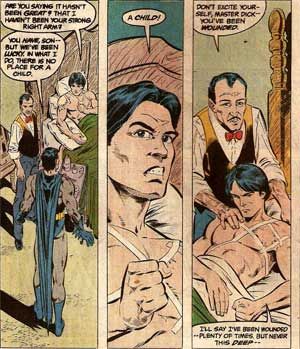
After Robin gets shot, Bruce decides to not endanger his life and “fire” him. Then young hoodlum Jason Todd becomes Robin a few months later. Yeah, we’re confused too.
The Dark Knight Returns is where Bruce warns Carrie Kelly that he will fire her if she disobeys orders. Carrie defies him anyway. Does Bruce follow through? No. He needs Carrie, and she would just do her vigilante thing without him. Instead, he improvises when she defies orders, and when she picks up clues that he misses. Most of the writers that carried on the “firing” threat tradition missed that point: Bruce never followed through on sacking a sidekick. If he follows through on it, he is no longer compassionate Batman.
Bruce firing a sidekick means bad news. It’s a red flag that the writers want him to be bat-dick. In a Silver Age Imaginary story, where Superman was framed for murdering the Waynes, Bruce fired Dick and wiped his mind for not wanting to commit murder. The image from that story is used for multiple memes, because of how out of character it is.
The same thing happens in Robin: Year One when Dick defies orders to gamble with Two Face for two men’s lives. Bruce saves Dick’s life but coldly retires him, and shows no emotion when Dick later runs away. Later on, Bruce fires Dick after the latter gets shot in combat, and decides to no longer let a kid fight alongside him. Batman also fires Stephanie Brown twice in two different guises, and both efforts backfire. Even Cassandra Cain got fired, and she was one of the most competent. Each time these children felt slighted, demoralized, and incompetent. As a result they would make rash decisions, and Bruce would realize he messed up, at least half the time.
Batman Incorporated
Batman, Incorporated was one of the best decisions that D.C. Comics made. The storyline comes up after Batman supposedly dies fighting Darkseid, after firing the latter with a gun, and then spends a few issues traveling through time and doing the whole being a hero and saving people thing. So the moral of that is to not bring a gun to fight with Darkseid, especially when they’re against your code. I really wish I were making this up. The benefit of this arc was that Damian Wayne, Bruce’s bratty son whom he had just met, becomes a better person after Dick Grayson makes him Robin. Tim Drake takes on a new title and a quest to bring back Bruce.
Batman, in making his brand international, encourages heroes to follow in his footsteps and to take up his resources. People thought he was dead, but his impact hadn’t vanished. He had given them hope, a reason to fight, a reason to care for others. Knight and Squire in the U.K. took up crime-fighting on the other side of the pond, for example. Cassandra Cain returned as Black Bat, to continue the fight despite her father figure disappearing. When the original Batman returns, he is impressed and decides to continue the venture, to support everyone he inspired. He uses his Bruce Wayne persona to financially support his new family. This is the heart we wanted. This is also the heart we couldn’t keep.
The New 52 Reboot
Then we get to the point where I stopped reading: the new 52 reboot. At that point Batman, Incorporated had trucked along very well, with Cassandra and Stephanie each allowed to spearhead their stories, while Damian Wayne learned to work with other people. Dying once probably helped with that. Jason Todd, well, at this point I doubt that anything could save Jason’s character apart from restoring his circus goofball personality.
I was done. Done with having to work through the new arcs, the new worlds, to hear the same story told in the same media, by the same company, and to be told that was the mainstream. Exploring Batman’s story in film and other media is fine because it shows the promise to work with new takes. Rebooting the origin again officially for new readers, undoing all the relationships built over time and as fans interacted and grew with the characters, felt like Bruce’s heart has been sucked away.
Redoing Batman’s relationships and looking at his fragmented heart requires the lore that has built up. Again, you need to establish that compassion. That’s why I am glad they brought back Earth One, where Bruce lived long enough to get married and raise a family. They brought back his daughter Helena, and what she learned from seeing her dad don and hang up the cowl.
Since then I have been sticking with most items that are pre-New 52, excluding work for television and film. This includes the direct-to-video animations. If I talk about Batman’s compassion, I’ll discuss the DC Animated Universe’s legacy, and its successors.
Please keep Puerto Rico in your mind, and donate to the Hispanic Heritage Foundation or to other legitimate organizations.



